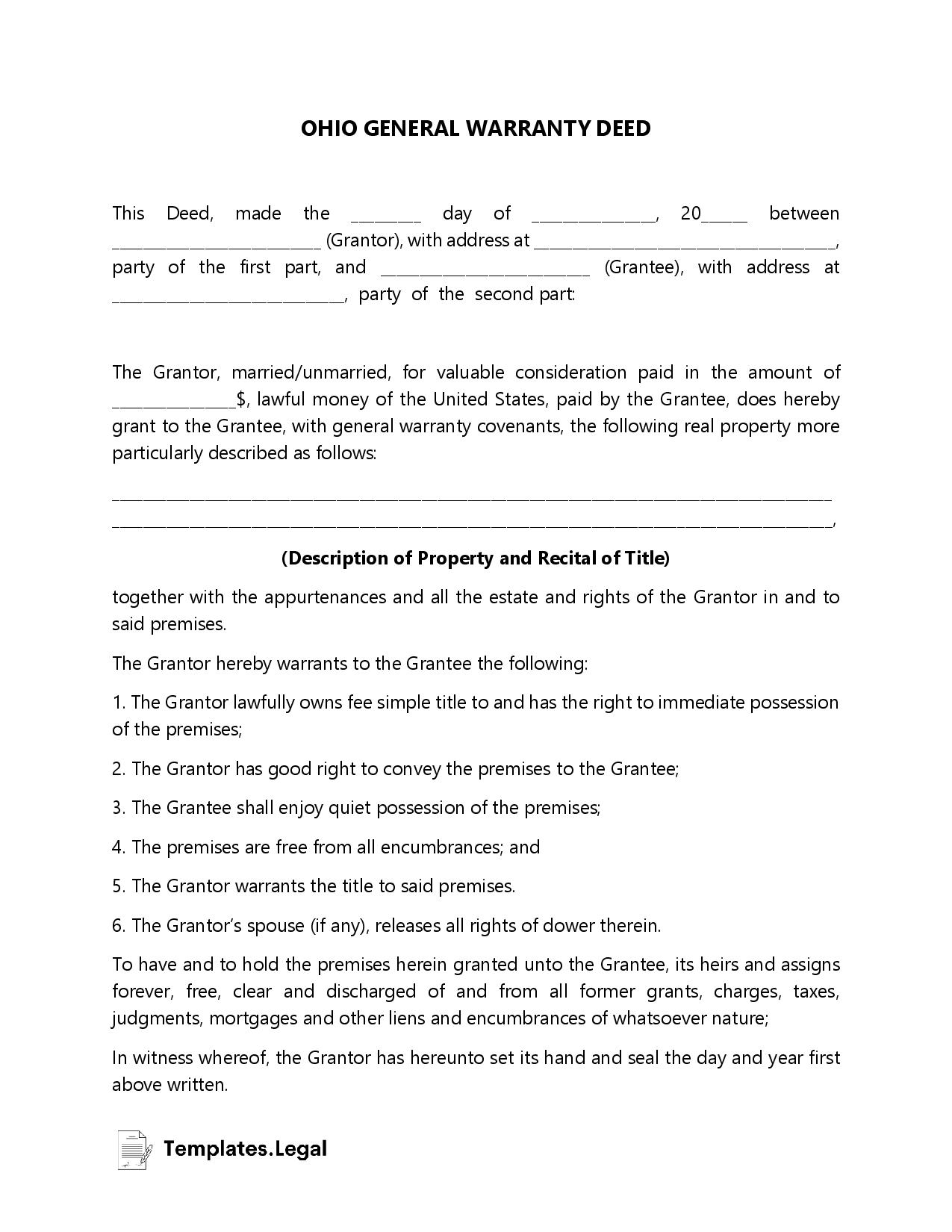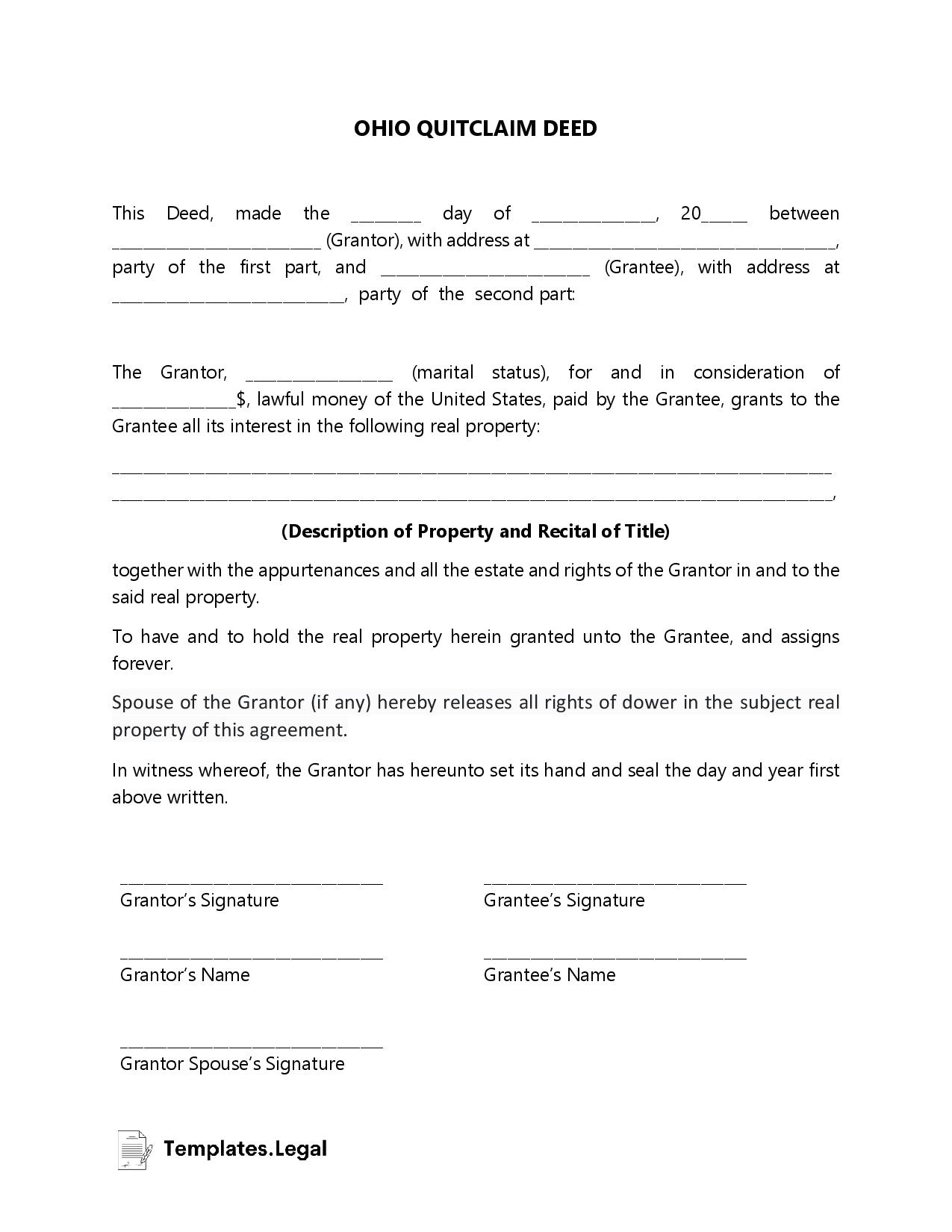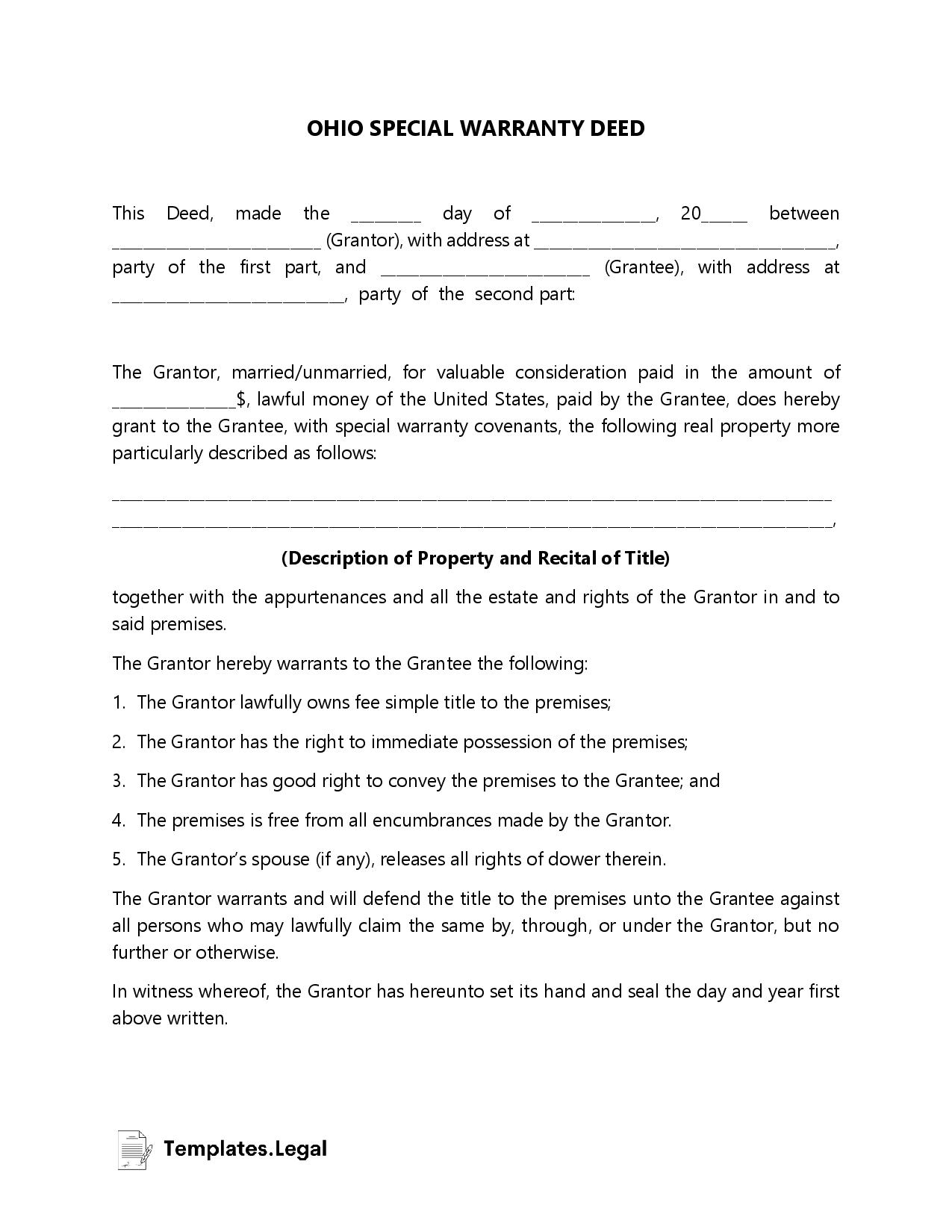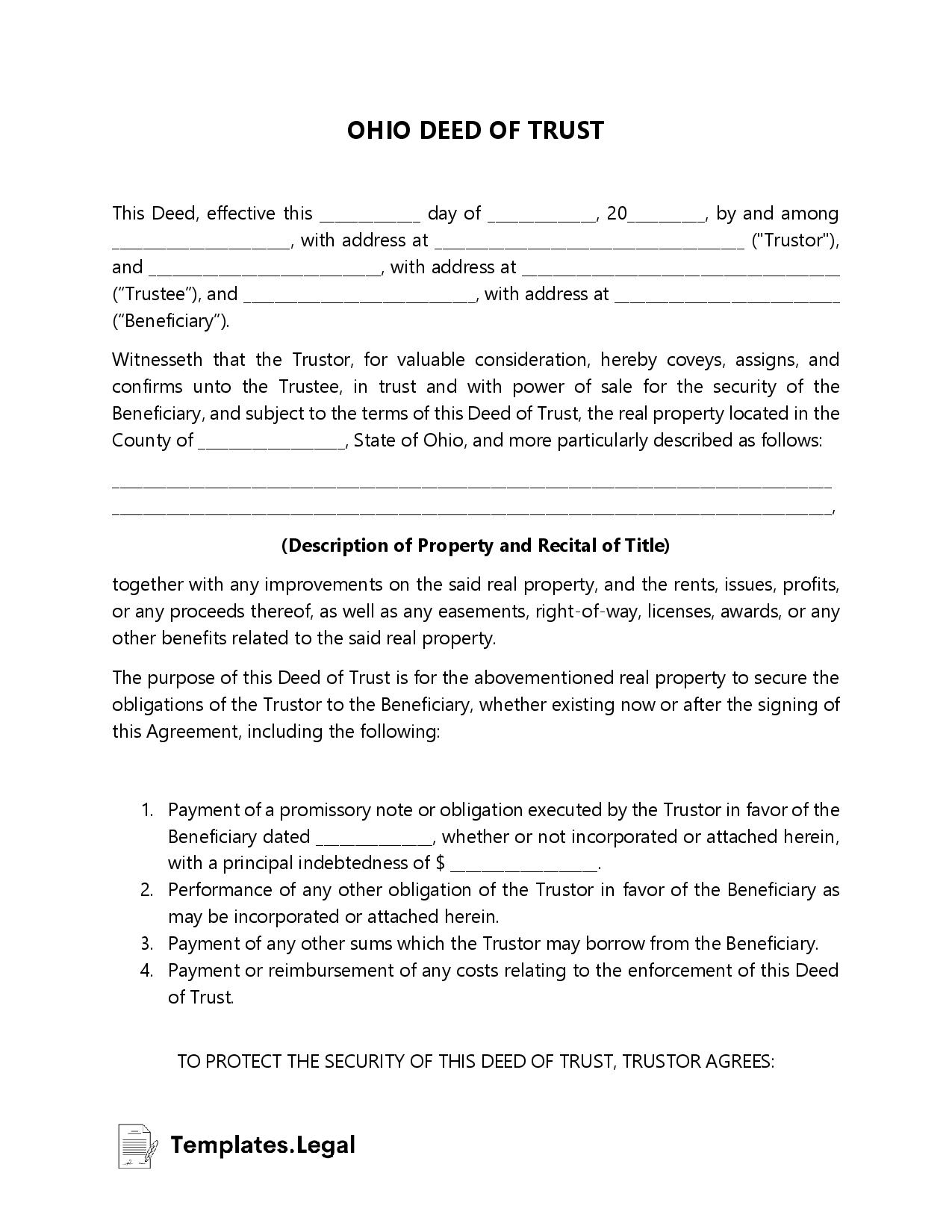Ohio Deed Forms & Templates
A deed transfers the title of a property from the current owner, the grantor, to a new owner, the grantee. Different Ohio deed forms are used for different types of property transfers. These are the most common types of deed forms used in Ohio.
Ohio General Warranty Deed
An Ohio warranty deed, called a “general warranty deed,” gives clear title from the grantor to the grantee. The warranty is a guarantee by the grantor that there are no clouds or defects in the title and that they have full authority to grant title to the grantee.
In the future, if the grantor could not produce the clear title, they are responsible for the cost of clearing the title for the grantee. The warranty protects the grantee’s ownership interest against anyone who previously had an ownership interest.
Ohio Quit Claim Deed
A quitclaim deed transfers a grantor’s complete ownership interest in a piece of property to the grantee. However, unlike a warranty deed, an Ohio quitclaim deed makes no guarantees that the grantor’s title is clear. Quitclaim deeds are most commonly used when transferring property from one family member to another or in the case of divorce.
Ohio Special Warranty Deed
In Ohio, a special warranty deed is called a “limited warranty deed.” The promises made in a limited warranty deed are narrower than those in a general warranty deed.
Under a special warranty deed, the grantor only guarantees that they have done nothing to create a defect in the title. They do not guarantee that any prior owners had clear title to the property.
Ohio Deed of Trust
Generally, a deed of trust allows a property’s owner to transfer their property to a lender as security for a loan. The lender is then legally considered the “trustee” of the property and can sell the property to collect on the loan without a court order.
In Ohio, deeds of trust are not permitted. Instead, the lender uses a mortgage to secure the loan and must go through the courts to foreclose and sell the home.
FAQs
Here are a few frequently asked questions about deeds in Ohio.




